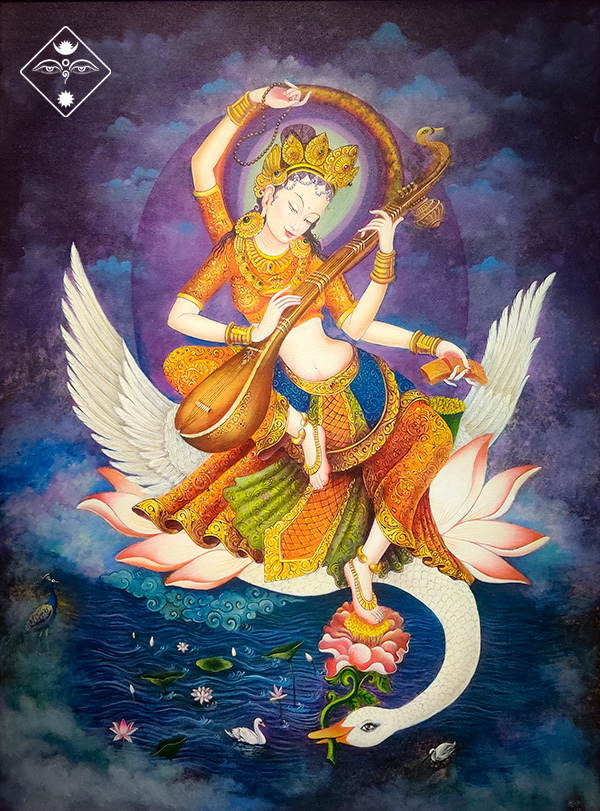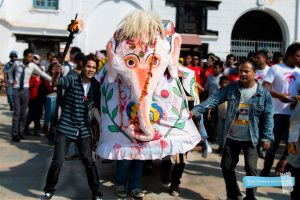
Introduction to Saraswoti Pooja
Saraswoti Pooja, also called Sri Panchami or Basanta Panchami, is celebrated on the fifth day of the waxing moon in the Nepali month of Magh. This festival holds great significance in Nepal and marks the start of spring. Even though the weather remains cold, this day signals the end of harsh winter and brings hope for warmer days ahead. This year, Saraswoti Pooja fell on January 20 and was observed as a government holiday.
On this occasion, prominent government officials gather to perform special prayers for the Goddess Saraswati. These rituals take place at the former Royal Palace in Basantpur, a name that literally means the “Place of Spring.” The term “Sri” in Sri Panchami signifies its importance, while “Basanta Ritu” refers to the spring season. The festival primarily focuses on honoring Saraswati, the Hindu Goddess of Learning.
Who is Goddess Saraswati?
Saraswati is revered across Nepal and India as the Goddess of Learning, wisdom, and knowledge. She is believed to be the consort of Lord Brahma and is usually depicted sitting on a white lotus. Her attire is a pure white sari, symbolizing purity, and her vehicle is a white swan, though she is occasionally shown with a peacock. Saraswati’s distinct feature is the vina, a stringed musical instrument she holds. In many depictions, she has four hands, two of which carry a book and prayer beads, while others hold the vina. Sometimes, a sword replaces the beads, symbolizing her association with Manjushree, a Buddhist deity.
Saraswati’s symbols are often seen on school signboards, along with the six-pointed star, or “Shatkona.” Her divine connection to learning makes her a central figure during this festival.
Saraswoti Pooja Traditions
On the day of Saraswati Pooja, thousands of devotees gather in the Kathmandu Valley to honor the goddess. Popular shrines, such as those at Lele, Gairidhara, and Swayambhu, see large crowds of worshippers. The rituals include burning incense, lighting butter lamps, offering flowers, and applying tikas.
Students form the majority of the devotees, as the festival coincides with the end of winter school holidays and the beginning of a new academic year. Children and students pray to Saraswati for success in their studies and exams. Learning tools like pens, books, and notebooks are also worshipped on this day. Traditionally, young children, usually between the ages of five and seven, are introduced to the alphabet by their parents during this auspicious occasion. At Swayambhu, people write letters and wishes for success on various surfaces, including walls, statues, and even the ground.
A Day of Celebration for All
Saraswoti Pooja is not just about religious observance. It’s also a day of joy and social interaction, especially for teenagers who visit places like Swayambhu to pray, socialize, and enjoy the festive atmosphere. The chalk graffiti seen around the area often reflects playful messages or expressions of love.
Connection Between Saraswati and Manjushree
An interesting aspect of Saraswoti Pooja is the link between Saraswati and the Buddhist deity Manjushree. Many people visit the Manjushree Hill at Swayambhu, where the goddess is worshipped as Manjushree. According to legend, Manjushree created the Kathmandu Valley by cutting through the Chobar gorge with her sword, draining the water to make the valley habitable. This sword is also seen as a symbol of cutting through ignorance. Buddhists regard Manjushree as the Bodhisattva of Wisdom and Literature, holding a sword and the “Pragyaparmita” (Book of Wisdom). Despite the differences, Saraswati and Manjushree are considered interchangeable by many in Nepal, highlighting the harmony between Hinduism and Buddhism.
Other Ceremonies on Sri Panchami
Sri Panchami is also considered one of the most auspicious days for other religious ceremonies, including weddings and Brata Bandha, the coming-of-age ritual for young Brahmin boys. On this day, these events can be performed without consulting an astrologer, a rare exception in Hindu tradition. The streets of Kathmandu are often filled with flower-decorated cars and marching bands accompanying newlyweds and their families.
Conclusion
Saraswoti Pooja is a beautiful celebration that blends religion, culture, and joy. It honors the Goddess Saraswati, marks the arrival of spring, and brings people together to pray for knowledge and success. This festival showcases Nepal’s unique cultural heritage and the harmony between Hindu and Buddhist traditions, making it a cherished occasion for everyone.




